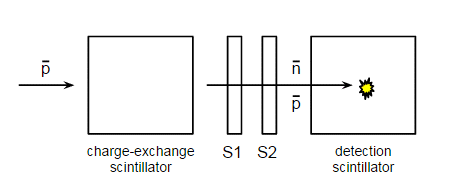The paper announcing the discovery is Antineutrons Produced from Antiprotons in Charge-Exchange Collisions by Bruce Cork, Glen Lambertson, Oreste Piccione and William Wenzel. It was published in Phys. Rev. 104, 1193. This is restricted access, but the paper is also available on Google books.
The discovery was made by creating a beam of antiprotons and allowing these to create antineutrons by charge exchange, then diverting away the antiprotons to leave a beam of antineutrons. These were detected by measuring the scintillations created by their decay. This diagram shows a schematic illustration of the detectors used:

A beam of protons passes into the first scintillator, where charge exchange reactions such as:
$$ p + \bar{p} \rightarrow n + \bar{n} $$
create antineutrons. The mixture of antiprotons, antineutrons and other particles created in the reaction, such as $\pi$ mesons, pass through to a second scintillator where their annihilation is detected by the flash of light released. The intensity of light emitted indicates the mass of the annihilating particle, so it can distinguish $\bar{n}$ and $\bar{p}$ annihilation from the decay of lighter particles like $\pi$ mesons. Antiprotons and antineutrons can be distinguished because antiprotons create scintillations in two intermediate detectors $S_1$ and $S_2$.
The timings of the scintillations are correlated, so an antiproton will produce a signal from $S_1$, then $S_2$ and finally a large signal as it decays in the final scintillator. An antineutron produces a large signal in the final detector but with no preceding signals from $S_1$ and $S_2$.

